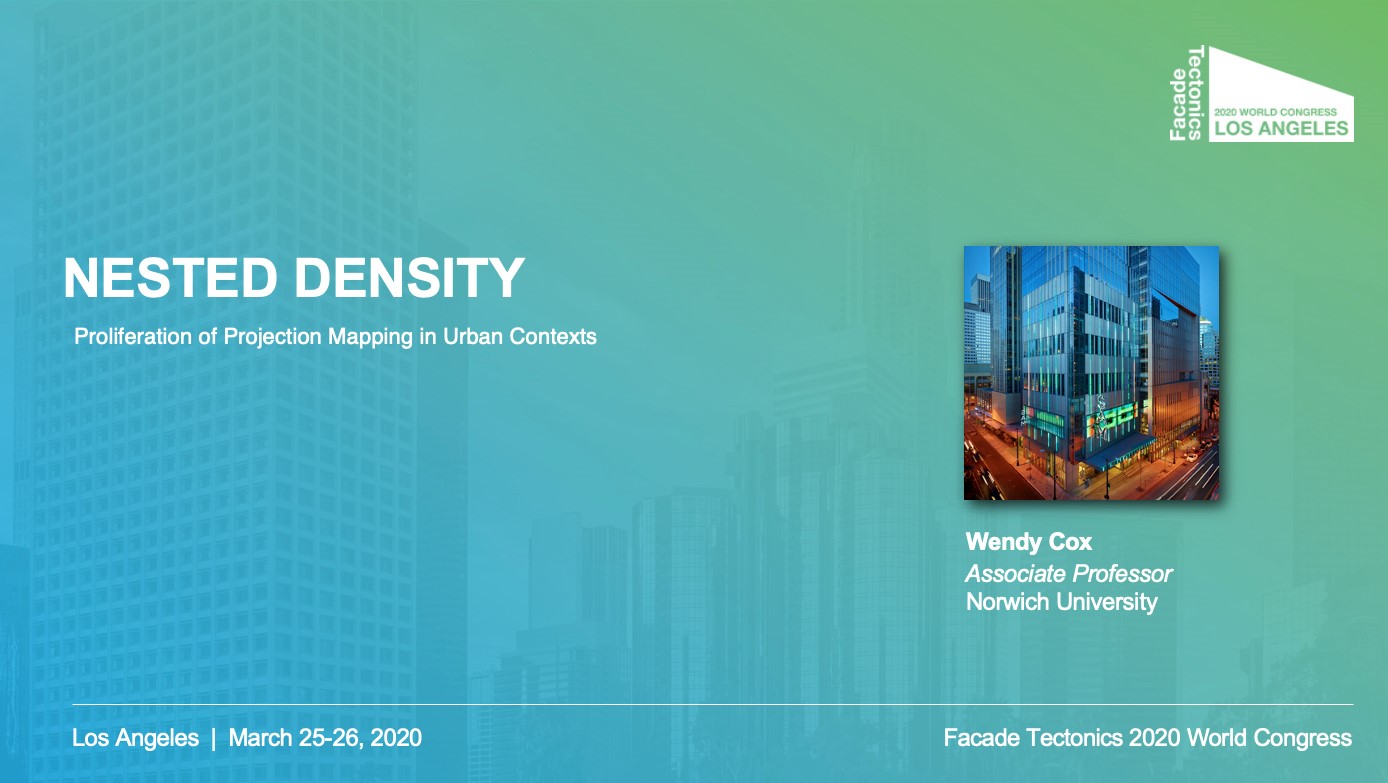
Nested Density: Proliferation of Projection Mapping in Urban Contexts
Prof. Wendy Cox
Projecting imagery onto building facades is not only becoming a marketing necessity for successful urban spectacles but is also altering social urban experiences. Architects are being asked to incorporate projection mapping capabilities into their designs and thus altering design processes and goals. These changes will influence the future form and materiality of facades and urban contexts, altering the look and feel of urban environments. Image mappings projected onto building facades can also provide additional layers of attributes creating new opportunities for engaging the viewer and viewed in new relationships with individual buildings and urban experiences overall. For example, the Federation of Industries of the State (FIESP) of São Paulo, Brazil, housing business groups supporting industry interests, became the site of a riot. Transformed temporarily, years later, the same building became a partner with the people through an interactive projection mapping. A person’s movements on the street became projected in building scale onto the FIESP front facade for all in the vicinity to enjoy. Building scale mappings provide a communal witness and visual complexity that can heighten and thicken urban experience. With its proliferation, building mappings may also fight for attention through increasingly dynamic and colorful imagery resulting in an oversaturation of stimuli. At least, in the beginning, this may require the need for a dulling of the visual senses, prompting versions of Georg Simmel’s blasé attitude to survive in future urban environments. In postulating potential implications of the increasing demand for projection mappings in urban environments, this essay engages the framework of Marshall McLuhan’s analysis on the intervention of technological extensions within society. What does this technological extension enable? Or phrased in McLuhan’s media theory terms, what is projection mapping’s message?
Please follow the link above to see my presentation.

